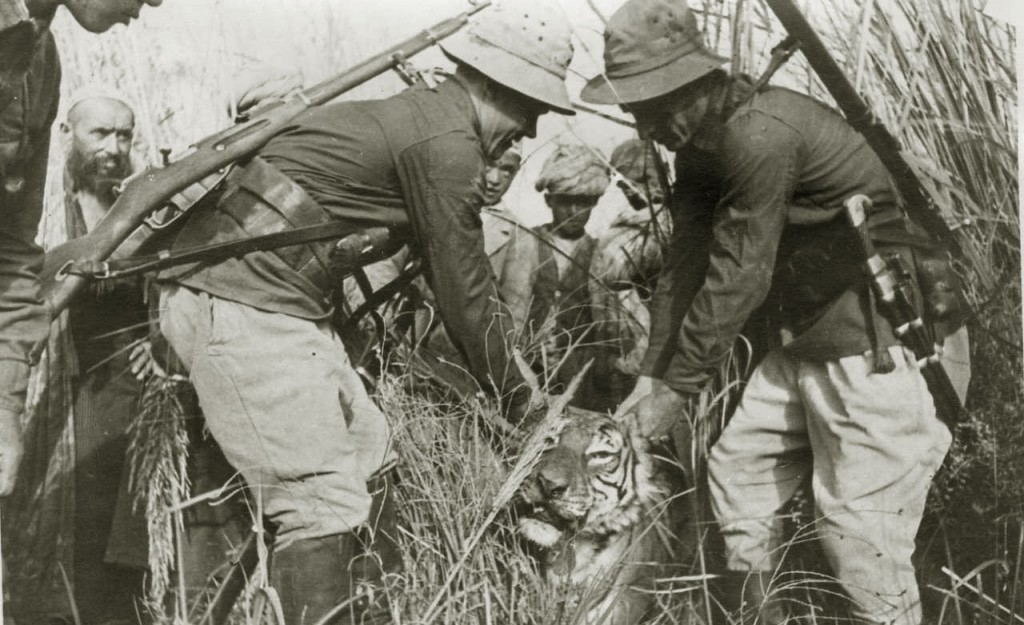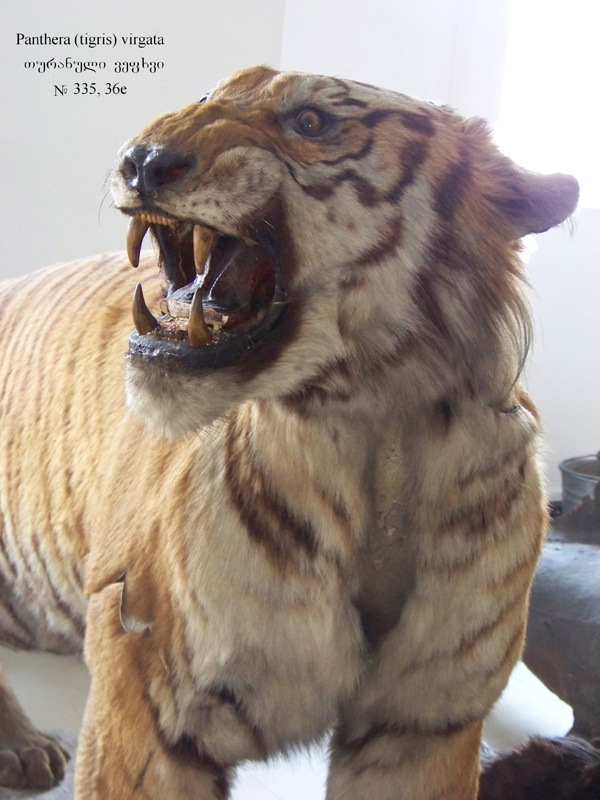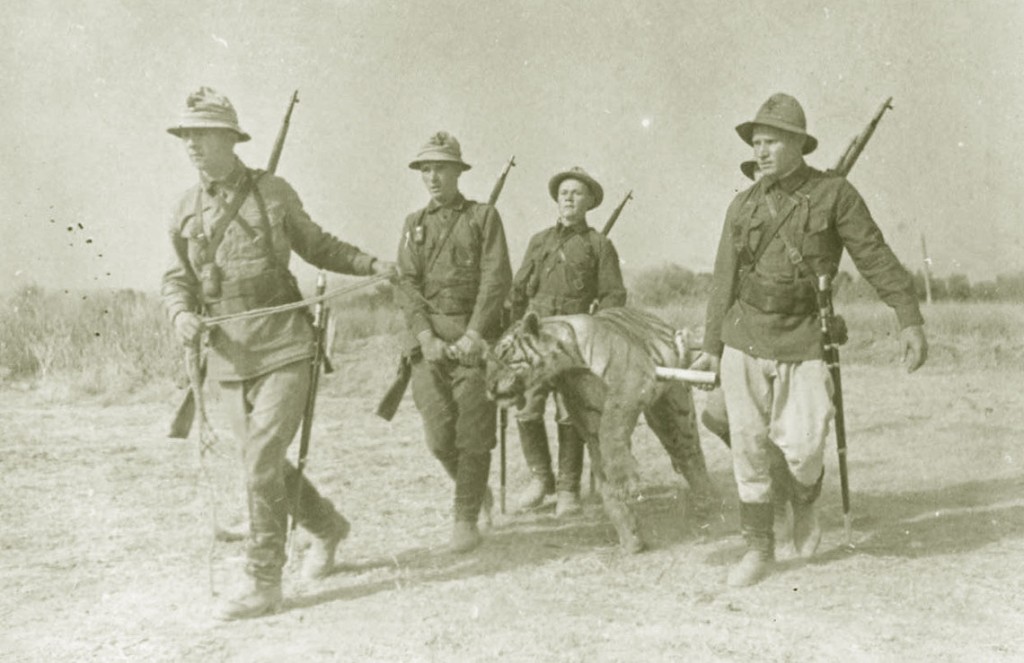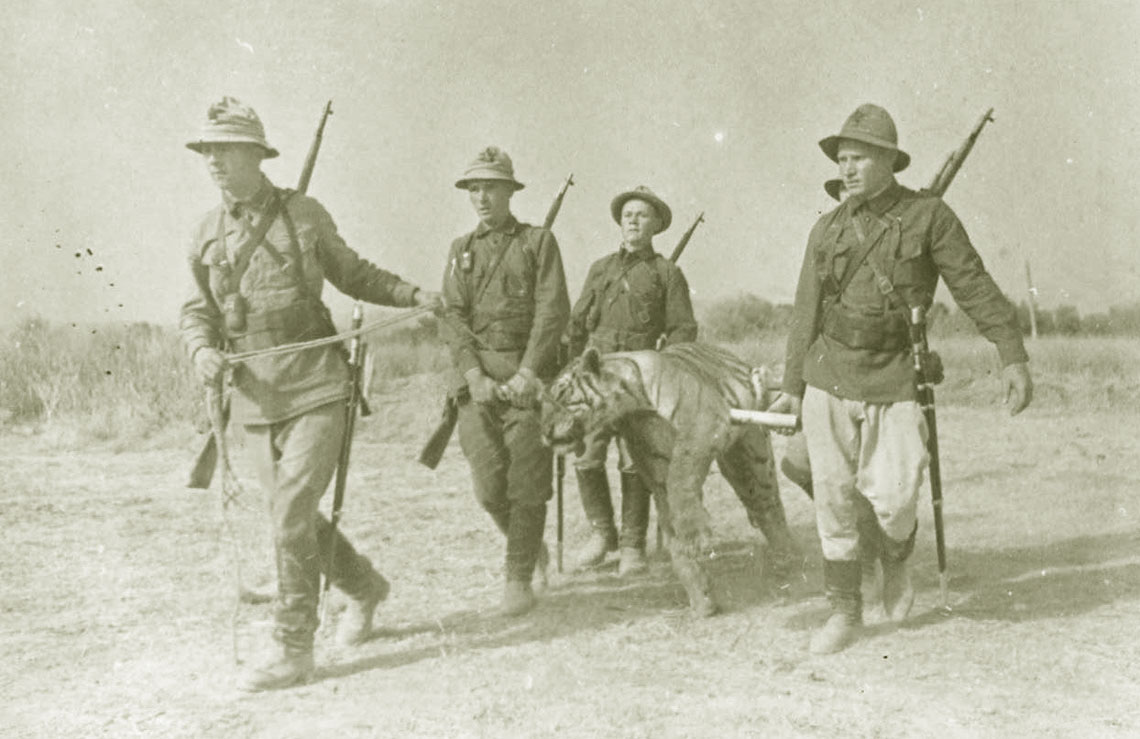The information cited below was forward to Kavehfarrokh.com by Kooshan Mehran on December 6, 2013. It was originally posted in the Georgian National Museum.
===========================================
From a period ranging between 1918 until the early 1930s, the Red Army was engaged in battles against the anti-Soviet Basmachi rebellion in Central Asia. The battles were especially fierce near the border to the north of Afghanistan in Tajikestan.
During this time, Soviet soldiers engaged in the hunting of wild game when not engaged in battles. A favorite hunt for these soldiers was the Turan Tiger.
 This Turan specimen has just been hunted by Soviet soldiers in Central Asia sometime in the early 1930s (photo undated-Photo sent by Kooshan Mehran to Kavehfarrokh.com on December 6, 2013). It would appear that this photo was taken somewhere along the banks of the river Panj.
This Turan specimen has just been hunted by Soviet soldiers in Central Asia sometime in the early 1930s (photo undated-Photo sent by Kooshan Mehran to Kavehfarrokh.com on December 6, 2013). It would appear that this photo was taken somewhere along the banks of the river Panj.
The Turan tiger-Male, Panthera (Tigris) Virgata species is now unfortunately extinct. The sample seen below was hunted near Tbilisi, Georgia in the Caucasus. The tiger shown below is believed to have come to Georgia from Iran, before meeting his demise in Lelobi.
 The Panthera (Tigris) Virgata above who originated in Iran and met his end in the village of Lelobi, near Tbilisi in Georgia (for more see here…). This is one of the last known specimens of this species of Tiger, now believed to be extinct (Picture Source: Georgian National Museum).
The Panthera (Tigris) Virgata above who originated in Iran and met his end in the village of Lelobi, near Tbilisi in Georgia (for more see here…). This is one of the last known specimens of this species of Tiger, now believed to be extinct (Picture Source: Georgian National Museum).
 Another snapshot of Soviet soldiers in Central Asia with the Turan Tiger (photo undated-Photo sent by Kooshan Mehran to Kavehfarrokh.com on December 6, 2013). One interesting detail in reference to the trooper walking second from left: he appears to have a shoulder strap with a rectangular flashlight; this would have probably been an ingenious device in the early 1930s.
Another snapshot of Soviet soldiers in Central Asia with the Turan Tiger (photo undated-Photo sent by Kooshan Mehran to Kavehfarrokh.com on December 6, 2013). One interesting detail in reference to the trooper walking second from left: he appears to have a shoulder strap with a rectangular flashlight; this would have probably been an ingenious device in the early 1930s.




